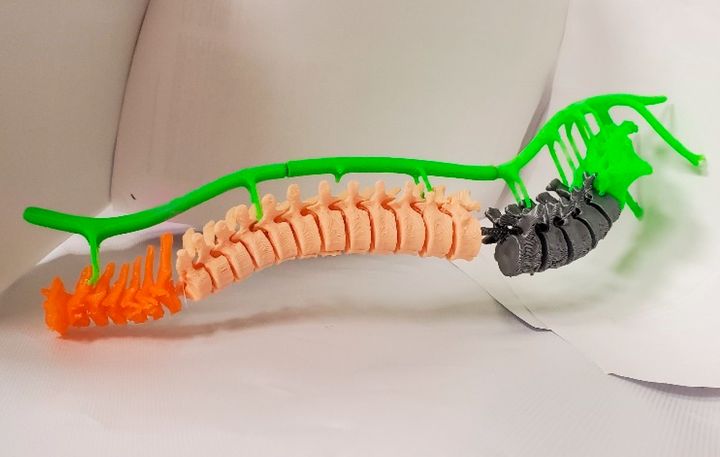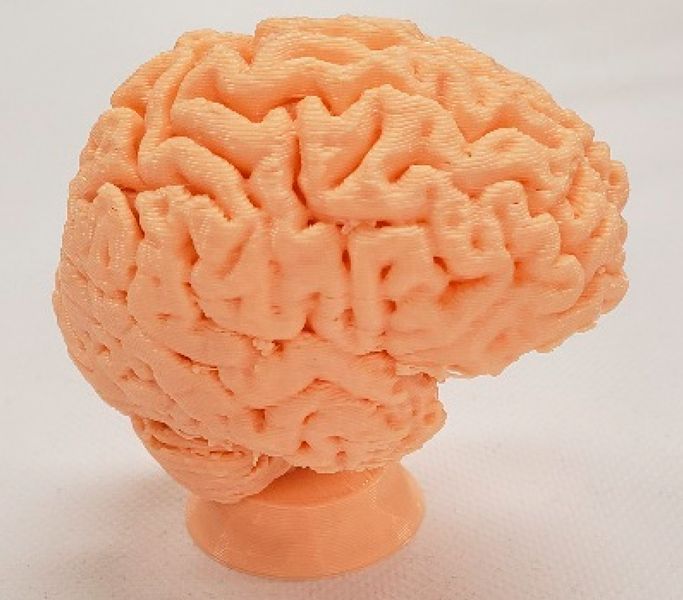
I’m reading an interesting analysis of how educators could save cash by 3D printing their own learning aids.
The study, undertaken by Nicole Gallup and Joshua M. Pearce of Michigan Technological University, compares the cost of producing learning aids via 3D printer versus acquiring them from normal commercial sources.
Learning aids, at least physical learning aids, are objects that students can interact with to learn about a specific topic. For example, a “brain” model could be used to instruct students on how folds are able to provide more surface area for brain operations. Seeing and touching is often more effective than simply explaining a topic in words alone.
The study hypothesized that it would be less expensive to 3D print this type of object than to buying them from off-the-shelf sources. For their analysis, they chose a number of typical examples of learning aids sourced from MyMiniFactory, and 3D printed them on a LulzBot device. This video shows Pearce at work in his lab:
Using some formulas to account for machine and material usage they estimated a typical cost savings of around 86% when 3D printing objects rather than sourcing them through Amazon.
This rings true to me, but the analysis did not take into account the cost of the 3D printer itself. The LulzBot device in question was at the time of the analysis priced at around US$2,500, making it an open question whether the savings are actually there or not.

This is a case of fixed vs. variable costs. The cost of the 3D printer is fixed, as it occurs only once, while the materials, energy and labor are consumed per each print. Usually the fixed costs must be allocated to each print job; if 100 prints are done, then each print takes 1/100th of the capital cost, for example.
The study does correctly point out, however, that there are options available to educators that are far less expensive than the LulzBot machine used in the study. In fact, suitable machines of today might be obtained for 10X less cost, and correspondingly cause less cost allocation to each print. Another way of looking at it is to calculate how many prints are necessary before breaking even, and that turns out to be a rather small number.
Some educators may already have a 3D printer on hand, which would make the costs most definitely smaller and immediately generate savings.
There’s a couple of caveats here, some of which are discussed in the paper.
First, there’s the issue of print reliability. If a print job fails, then there’s a wastage of electricity and material. This must be accounted for in terms of allocating the likely rate of failures to the successful print jobs. In the paper they say this can be as high as 20% for new operators, but is likely lower with equipment that provides a more reliable experience.
Secondly, there’s the issue of designs. This approach makes no sense if an educator needs, say, a brain 3D model and cannot find one. The educator most likely does not have the 3D skills to prepare their own brain model using CAD tools, so sourcing from a repository is about the only practical option. In spite of the size of some current 3D model repositories, there is still the possibility of an educator not being able to find what they need.
Nevertheless, I think this is a good approach, as most schools now have a 3D printer on hand. Prints can also last for years afterwards, making for low demand on a shared 3D printer at a school. A final benefit is that students may be more interested in a learning aid if they can see it being produced on site.
Via MDPI
